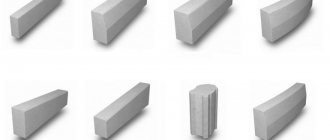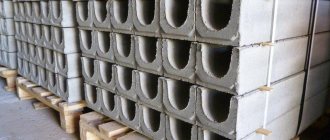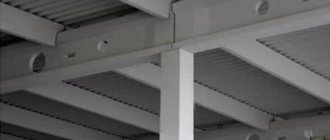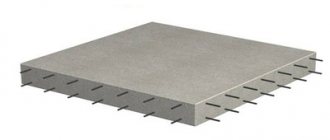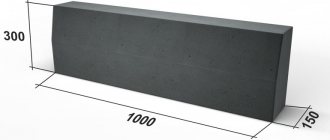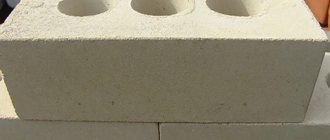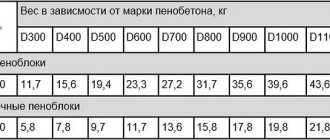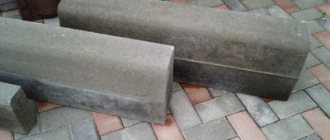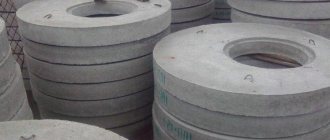Curbs and curbs are needed to separate pedestrian areas from the roadway. They are the same, but smaller in size, used to delimit pedestrian zones and separate lawns. In general, for improvement. And not only in public places, but also in private courtyards. What sizes of borders are there in general, where they are used, what types. You need to know about this if you have to make paths in the garden or a blind area at home. It is also advisable to separate it, and it is most convenient to do this with a concrete separator.
Types and purpose of standard blocks
A sidewalk curb is one of the types of reinforced concrete products that are installed on sidewalk blind areas. It should be noted that there are 4 categories of products on sale:
- Curb . This is the most common type of stone used to delimit lawns, pedestrian areas and bicycle paths.
- Vibro-cast curbs . Such products immediately attract attention with their unusual shape and colors. Products can be produced in the form of steps, waves or arcs. The usual gray color of concrete curbs is changed by the addition of dyes and plasticizers. Vibrolithium stones are commonly used as architectural decorations.
- Lawn blocks . This is a type of curb that usually borders lawns to prevent the topsoil from spreading.
- Road stone . This variety can be considered a sidewalk curb at a stretch. They are used to preserve the integrity of the road surface, so the products have massive dimensions and reinforcement is required during manufacturing.
The technology for the production of sidewalk curbs involves the use of heavy concrete grade M 300 or M 500 . This is a prerequisite for the structure to have a high margin of safety and resistance to dynamic compression.
Stone borders
The appearance of modern materials on the construction market has not reduced the demand for natural stone products. It still remains one of the best solutions for decorating areas. Curbs made of natural stone are distinguished by their external beauty, variety of textures and shapes, and durability. The practical component is no less important - the high strength of the material.
Stone borders depending on the type of stone
Natural stone successfully complements the natural design of a site or garden. Although it does not have a wide color palette, no building material can compare with it in terms of variety of shades. Such boundaries are best combined with a path paved with paving slabs, granite or paving stones.
Examples of using stone borders
The most common types of stone that are resistant to impact are:
- quartzite;
- gabbro;
- granite.
Gabbro border.
Granite border.
They are somewhat inferior in strength to blanks made from marble, travertine, and dense limestone. The more fragile ones include tuff and loose limestone.
The use of borders made of porous rocks is not recommended. They accumulate moisture, which freezes in winter and destroys the material from the inside.
Stone borders depending on the type of surface treatment
The type of stone surface treatment is important when creating a border.
Depending on the method used and the equipment involved, stone curbs can be:
- sawn;
- chopped;
- polished;
- subject to heat treatment.
Chipped.
Polished.
Sawn.
The most widespread are curb stones made of sawn granite. To process the rock, a special technique is used that quickly divides the material into blocks of certain sizes. The resulting blanks meet the specified standard and have neatly processed edges. This is one of the best solutions for decorating the borders of paths.
Combined options are also possible: some of the sides are processed by sawing, the rest will be chipped. Individual surfaces can be polished, for example the top and front.
pros
- Resistance to weather conditions, including precipitation and ice formation.
- High abrasion resistance.
- A variety of surface texture options: anti-slip, smooth, chipped.
- Possibility of selecting texture and shades of stone.
- Unlimited period of use provided there is no excessive mechanical stress.
Minuses
- High cost of material.
Standard sizes according to GOST
Sidewalk curbs are manufactured in accordance with GOST , therefore they have standard sizes, regardless of the manufacturer. According to the state standard number 6665-91 , the products have the following dimensions:
Curb.
- Length – 500/1,000 mm.
- Width – 45/50/80 mm.
- Height – 200/210 mm.
Lawn block.
- Length – 500 mm.
- Width – 70 mm.
- Height – 211 mm.
Road block.
- Length – 1,000 mm.
- Width – 300/450 mm.
- Height – 150/180 mm.
Vibro-cast curbs have similar dimensions, but do not have a clear geometry.
| Small border | Large border | Garden border (vibropress) | Road curb (vibropress) | |
| Dimensions, mm | 500*200*45 | 500*200*70 | 1000*200*80 | 1000x300x150 |
| Weight, kg | 8 | 12 | 25 | 100 |
| On a pallet, pcs. | 100 | 100 | 40 | 18 |
| Frost resistance | F200 | F200 | F200 | F200 |
| Cement brand | M500 | M500 | M500 | M500 |
This will be useful to you
To better understand tiles for sidewalks and paths, and confidently navigate their types, shapes and sizes, read this article >>>
Technical characteristics and markings
During the construction of private houses, main curbs are not used due to their large dimensions and high cost. In most cases, garden and sidewalk borders are used to improve private areas. In factory conditions, curbs are made using the semi-dry vibropressing method. Manufacturers offer curbs with the following technical characteristics:
- concrete products with a minimum strength grade of M400;
- concrete class B30;
- frost resistance 200-300 cycles;
- The estimated operational life is 20 years.
How much does a bead stone weigh?
Given the wide range of sizes, sidewalk curbs cannot have the same weight (see table above). Here you will also have to divide into groups. It looks like this:
- Curbs and lawn blocks. The weight of the products varies between 18-36 kilograms.
- Road curbs. Here, the mass of products can vary between 95-150 kilograms.
The weight of vibration-cast curbs is difficult to calculate. The products have variable geometry; accordingly, the mass of the stone will also change. If we talk about average values, the weight of the product is about 100-120 kilograms.
Pouring concrete into molds
A high-quality concrete product can be obtained by using a vibrating table. Forms filled with concrete are placed on it, and air is removed from it through vibrations. If this is not available, then compaction of the concrete solution can be achieved manually by tapping the form with a hammer until all air is removed from the solution. If it is necessary to make a more durable reinforced product, then the forms are first half filled with concrete, after which metal rods are placed in them and filled again with the remaining mortar. Its compaction is performed in the same way - vibration. The concrete poured into the molds must be kept for at least 48 hours, the molds must be removed and the product must be left to gain strength for another 3-4 weeks. Only then can you begin installing the curbs. If you rush and do it earlier, there is a high risk of the product breaking.
Self-installation of sidewalk curbs
The sidewalk curb is easy to install, which is an undeniable advantage of this type of product. It is enough to follow this order of work:
- The territory is marked taking into account the features of the landscape.
- According to the markings made, pegs are driven in and the thread is pulled between them. This will be the level of the top of the curb.
- Then a trench is formed along the entire length of the marked area. The depth is 1/3 from the top point of the stone, the width is 10 centimeters larger than the size of the block.
- The bottom of the trench is compacted to prevent soil subsidence.
- Cement-sand mortar is poured. The recommended ratio of materials is 1:3 for cement and sand respectively. The mixture should have mobility convenient for pouring, but not be too liquid.
- Install the border at the level of the cord. The stones are leveled in height by placing mortar underneath.
- The joints are also filled with mortar, the installed borders are left for 24 hours for the mortar to set.
Then the free space of the trench is filled with soil, which must be thoroughly compacted. At the final stage, the sidewalk is installed.
Brick borders
Such fences look good on a path covered with paving stones or natural stone.
The classic way to create a border using bricks involves the use of paving clinker bricks. Since ordinary brick is subject to rapid destruction under the influence of natural factors, it is not suitable for street work. Clinker brick is more durable and weather resistant.
Clinker brick.
Creating a brick border is a simple and low-cost procedure. Installation of bricks along the edge of the curb is carried out on a previously prepared base of cement mortar poured into a trench. In some cases, they do without pouring a concrete base.
Laying bricks for the border.
The simplest installation methods are to install a brick on an edge or end. In this case, the curb is sprinkled and compacted so that one half is underground, and the other creates a demarcation line on the surface. For better adhesion between bricks, it is recommended to lay a layer of cement mortar.
Option for using a stone border
pros
- Easy to install and repair.
- Availability of material.
Minuses
- Expensive arrangement.
- Conventional types of ceramic and sand-lime bricks are quickly destroyed by moisture.
Manufacturing technology
Typically, sidewalk curbs are made in a factory, but the production technology is quite simple, so you can make the blocks yourself. This option is ideal for owners of personal plots who want to diversify the landscape design of a country house.
The technological process begins with the manufacture of a mold for casting. It is immediately necessary to clarify that the form can be purchased ready-made - it is a monolithic structure, convenient for pouring and removing concrete mixture. However, you can make the mold yourself using sheets of plywood or metal.
The block size can be chosen arbitrarily, in accordance with individual preferences. However, the length of the stone should not exceed 2 meters (otherwise the block may break).
Note that for ease of installation, one side of the block should have a slight bevel. This can be achieved by making an appropriate mold or cutting off the excess plume with a machine after the mixture has set.
- To prepare the mixture, you need to prepare a cement-sand mixture (proportion 1:3 ).
The components are mixed until a homogeneous mass is obtained. Then crushed stone is added in a ratio of 3 parts stone to 1 part dry mixture. Add water to the mixture and mix, avoiding the formation of lumps. - After this, the mixture is poured into the prepared mold, having previously lubricated the walls with used machine oil.
If you plan to make a reinforced curb, fill the form halfway, then install the reinforcement and add the rest of the concrete. The surface is leveled with a construction trowel.
- To be able to remove the block, the filled mold must sit in a cool place for 3-4 days . After this, the block is removed and left to dry in the open air for another week. After this period, you can begin installation.
Raw materials and materials used in the production of stones
Concrete curbstone can be made from:
- fine-grained concrete;
- heavy concrete.
Curbs made from concrete
Curbs with a length of 1000 mm are made from fine-grained concrete. Manufacturing technology: vibrocompression. It is allowed to use other technologies to ensure the required properties of products.
For the manufacture of stones 3000 and 6000 mm long, heavy concrete is used, and reinforcement is required.
Composition of concrete for the curb:
- The following binders can be used: Portland cement without additives, Portland cement with additives of mineral origin (no more than five percent), Portland cement grades 400 or higher, which should not contain more than 5% MgO and more than 8% Ca3Al.
- Fillers can be: sand (enriched and fractionated), crushed stone (from graphium, natural stone or blast furnace slag). Sand fineness modulus - from 2.2 (for fine-grained concrete) and from 2 (for heavy concrete). Grains larger than 20 mm should not be used as coarse aggregate.
Crushed stone is used that has a compressive strength grade of 1000 and frost resistance grade of F200.
- To reduce production costs, the use of other ingredients is allowed: slag, ash and slag mixtures, fly ash.
- The water-cement ratio cannot exceed 0.4.
Supplements
All additives used in the production of borders must not impair the performance characteristics of the product.
- The hardening of fine-grained concrete can be accelerated using calcium chloride or nitrite-nitrate-calcium chloride (no more than 3% by weight of the binder).
- Lignosulfonates can be used as plasticizers (up to 0.3% by weight of the binder).
- Neutralized air-entraining resin, soap naft, asidol, and organosilicon compounds GKZh are used for air entrainment.
- Gas-forming additives and thinners are also used.
Technical lignosulfonate
Reinforcement materials
The reinforced concrete curb is reinforced with reinforcing steel.
Consumption of reinforcement for the manufacture of one stone
Types of steel:
- hot-rolled class A-IV or А-V and thermomechanically and thermally strengthened class At-IV or At-V - for use as prestressed reinforcement;
- hot-rolled class A-III or A-I and wire class BP-I - for use as non-prestressing reinforcement.
For the manufacture of hinges, hot-rolled reinforcement is used (its diameter is 0.6...1.2 cm), made from steel VSt3sp2 or VSt3ps2
Example of reinforcement of some types of stones
Plastic border - an affordable alternative to stone
This is an excellent solution for decorating personal plots. Such garden borders are usually cheaper than their concrete counterparts, and are much more convenient to install. However, ideal materials do not exist in nature, so plastic borders are also not without their drawbacks, but first things first.
Pros and cons of plastic on the garden path
Advantages:
- A wide range of. In addition to the usual ribbon models, you can find decorative elements on sale, imitation of natural stone, brick, wood and metal.
- Practicality. If the plastic section is damaged, it can be easily replaced. You will have to tinker with concrete sidewalk curbs much longer.
- Long service life. Plastic belongs to the category of durable materials.
- Neutrality to any environment. Plastic products are resistant to sudden temperature changes, are not afraid of humidity, and do not fade in the sun.
- Attractive appearance. Such borders are available in a variety of colors, which opens up almost limitless possibilities for decorating personal plots.
It should be noted that the plastic bends easily, which allows you to create winding paths.
If we talk about shortcomings , the following nuances cause complaints:
- Fragile plastic is susceptible to mechanical damage.
- The material burns well.
- Questionable environmental safety.
Typical dimensions and installation
The width of plastic borders varies between 10-28 centimeters, thickness: 0.5-2 mm.
If we talk about installation features, plastic products are much more convenient than their concrete counterparts. The key difference is that there is no need for preliminary site preparation. A trench is dug along the path or flower bed, about 10 cm . Pointed pegs, which are located at the base of plastic borders, are hammered here.
The sections are fastened together with locking joints. The curb is leveled, then the trench is filled with soil.
The difference between a curb and a curb
As you understand, curbs and curbs are elements that separate the sidewalk from the roadway or delimit different zones of pedestrian paths (for pedestrians and bicycles, for example). So what is the difference between a curb and a curb?
What is the difference between a curb and a curb - the installation method. Namely, at what height its top is located
If you thought it was size or shape, then you were wrong. They are made from identical elements, which manufacturers call side or curb stones. The only difference is how they are installed. If the surface of the side stone is flush with the covering, then it is a curb. If part of the height protrudes above the covering level and forms some kind of obstacle, this is a curb. That is, it depends on how deep you bury the curb block.
Types of border designs
There are many types of concrete curbs. This is due to their wide range of applications. Each type has its own characteristics and distinctive characteristics. Curb stone can be divided according to several parameters.
Purposes of application
The main difference lies in the application for which the product is manufactured. This circumstance determines the set of quality characteristics, properties and appearance of the curb stone. Manufactured in accordance with GOST 6665-91.
Trunk
It has the largest sizes of the entire line. The product is available in different weights and in several sizes.
Installed on:
- intercity road routes;
- bridges;
- road junctions;
- highways;
- long roads with a median.
The second name is highway. It is distinguished by increased strength and frost resistance characteristics, therefore, under certain conditions, it provides powerful wear resistance. The main curb is very resistant to external factors.
Its functions include:
- dividing the roadway into pedestrian and roadways;
- protection of the coating from moisture leakage;
- holding the load of the horizontal reaction of the road surface during the passage of vehicles;
- decorative function and marker to mark the beginning and end of a road zone.
Due to its reliability, it is suitable for arranging roads of any class.
Road fencing
The popular name for this species is road.
It is used on 90% of city roads, parks and yards. Installed along sidewalks or paths associated with the passage of vehicles.
Functions of road stone:
- decorates and frames paving slabs;
- prevents destruction and erosion of the road, ensures safety;
- increases the resistance of paving slabs to operational loads;
- maintains the geometric boundaries of the road surface;
- protects against water leakage.
The service life of the curb is 15-20 years.
Read more about this subtype of concrete curbs at the link.
For garden
The curb or sidewalk border is very widely used in landscape design compositions. That's why it's called garden. Used as fencing :
- garden beds;
- tracks.
It also helps to emphasize a zone or a separate element of the composition. It looks similar to the road one, but is smaller in size. It can have a different shape - stepped, arced or wave-like.
It is made with the addition of various additives that improve the quality characteristics and appearance of the product. In addition to gardens, it can be used in residential areas, parking lots and car parks.
There is a special type of garden border for a lawn mower. It has an uneven edge, which on one side drops to the height of the lawn. This allows you to cut along the edge of the lawn without damaging the blades.
Read more about concrete garden borders here.
According to production method
Curbs are made using two technologies - vibration casting and vibration pressing. Some beads are made using the first method, others - using the second. The purpose and characteristics of the products differ accordingly.
Vibrocast
The basis of the method is the use of liquid concrete mixture . It is poured into special molds of the required size. Then the mold is placed on a vibrating table and kept there for a certain time specified in the technology. This is necessary to remove air bubbles and obtain a uniform, dense structure.
To prevent possible splits and give the product strength, the mixture is poured onto iron reinforcement laid in the mold. The next stage is that the forms are placed on racks, where the mixture dries completely.
The advantages of this method:
- the ability to produce products of different shades;
- attractive appearance in all respects;
- decent strength and frost resistance characteristics.
Despite its advantages, this type also has many disadvantages :
- Differs in violation of geometric dimensions. This is due to the reusable use of forms that are subject to wear and tear.
- Corner chipping. This happens during stripping.
- Rapid destruction due to moisture penetration. Due to the presence of capillary pores that absorb water. It freezes at low temperatures and destroys the stone. Also, loss of strength occurs due to the fact that iron reinforcement rusts over time.
- The weight of the product is quite large, which often leads to the need to use special equipment for unloading and stacking.
- High cost of color models.
The presence of these disadvantages does not reduce the popularity of vibrocast curb stones.
Vibropress
This type of product is made using a different technology. It involves the use of a semi-dry hard mixture. Also, special equipment is required for work - a brick press. Stages of the method :
- Filling. Special molds are placed on a pallet and placed on a vibrating table. Raw materials are poured into the matrices.
- Vibration sealing. The mixture is exposed to a special press (punch) and a vibrating table. The process occurs until the required density and size of the border is obtained.
- Stripping and curing. The product is released from the mold and placed in the chamber on the formwork.
Advantages of the method:
- Clear shape and precise geometric dimensions.
- Lack of capillary pores. When the mixture is heated, excess moisture evaporates.
- High frost resistance and strength.
- Possibility to produce two-layer and colored products.
- Relatively light weight.
The disadvantages include the porosity of the structure.
About vibro-pressed curbs in detail here.
Monolith
The monolithic method involves the presence of a trench along the entire length of the curb.
Process stages:
Preparing the trench . The width of the trench should not exceed 5-10 cm, the depth should be 1/3 higher than the height of the curb. It is necessary to lay a layer of sand or crushed stone at the bottom of the trench and level the surface.- Construction of formwork . First you need to drive in pins from thick reinforcement along the sides of the trench. This is necessary to enhance the rigidity of the structure. Then you need to make formwork from slate, plywood or corrugated board.
- Filling . Prepare a concrete solution and pour it into the trench. Then you need to compact the mass. This can be done with a special vibrator or manually using a metal pin. The pin should be inserted and removed slowly and the solution should be mixed quickly.
The final stage involves drying the solution. The entire trench will need to be covered from the sun and periodically moistened with water for 5-7 days. After the concrete has dried, the formwork must be removed. Features of the method - the finished structure cannot be removed and moved.
More information here.
By brand
A side stone of any brand is indicated by a group of numbers and letters. The marking contains information about its type and dimensions.
GOST 6665-91 defines the marking scheme. The name of the stone is placed in front, then the dimensions. For example, XX 1. 2. 3. 4 :
- XX – designation of the type of stone;
- 1 – length in cm;
- 2 — height in cm;
- 3 - width in cm;
- 4 – radius of curvature (may be absent).
Based on GOST, curb stones are divided into types :
- – straight standard privates. A classic option for separating zones.
- BU – straight with widening. A block with chamfered edges.
- BUP – straight with intermittent widening.
- BL – straight shape with a tray. Has a flat groove along its entire length. It serves to remove moisture. Used in areas with high levels of precipitation.
- BV - entry. The height of such stones is slightly lower. It is used in places where vehicles enter.
- BC – curvilinear. Serve as limiters for curved sections.
Example - BR 100.30.15. Explanation: straight stone, length 1000 mm, height 300 mm and width 150 mm.
Shape
The most common standard shape is a rectangle with a slightly beveled side.
This shape is considered neutral and fits perfectly with any style. In second place are wavy, arched, stepped products. They are more expensive, but add creativity to the compositions.
Special attention should be paid to the hinged curb. It is used when arranging rounded elements of various diameters. There are several standard product sizes from 0.2 m to 0.6 m, and colors are also available. Made from fine-grained concrete B-22.5.
What non-standard sizes of curb stones exist?
Custom products are produced for a variety of reasons. First of all, large stones are not suitable for all objects. On a personal plot, it is usually necessary to use more compact products. There is not enough space for large ones; in addition, they are more difficult to work with: special equipment or several assistants are required. Small stones solve both problems, as they are easy to lay on their own. The main requirement is a strength level of at least B22.5. Another common option is standard, as its name suggests (often used). It should be taken into account that, at the request of the customer, different versions of the standard can be created.
Common products for installation in personal and garden plots:
- 500*240*35 cm (9 kg);
- 390*190*90 cm (weight – 15 kg);
- 500*200*80 cm (weight – 20 kg).
Size ranges for curb stones:
- length: 40-80 cm;
- width: 3.5-10 cm;
- height – up to 20 cm.
Colored border
The color can also be standard - most often it is gray. But different manufacturers have products in brighter colors in their product line: yellow, brown, red, etc. But the gray tint will still be visible.
Factors influencing prices and installation
The cost of products is affected:
purpose and purposes of using the stone;- appearance (color, shape, dimensions);
- brand.
Installation price depends on:
- product dimensions;
- installation difficulties;
- design forms;
- quantities;
- soil characteristics;
- urgency of work;
- places of work.
The cost of installation is also influenced by the professionalism of the workers.
For more information on pricing please follow the link.
Overview of types of stones produced according to the standard
The main function of a curb stone is to create a barrier for soil that may fall onto the roadway or sidewalk when precipitation occurs. In addition, it is also a decorative element, and it also provides comfort for movement on roads and paths. Main features:
- the main material is concrete (there are also reinforced products);
- significant length with a small end area;
- increased wear resistance.
INTERESTING: How to level the floor: plywood, OSB, gypsum fiber board or chipboard
Without exception, all characteristics are described by GOST 6665-91. Only standardized edging stones may be used if road installation is being carried out. They are made from sand concrete or heavy concrete, which contains gravel filler. The determining factor when choosing is also the brand - a composition of at least M300 is recommended. For the southern and northern regions, different materials are used. This is due to the fact that the climate in the southern regions is unstable, air temperature changes many times, therefore, it is recommended to use materials with a large number of freezing/defrosting cycles (F400 and above).
Granite curb stone: dimensions, features
Granite curb stone
The main advantage of such products is durability, as they are very durable and wear-resistant. In addition, granite looks attractive. However, this is heavy material. Installation will be difficult and the price will be high. The main varieties of this stone:
- height: from 70 cm to 2 m;
- height: from 15 to 60 cm;
- width: 8-20 cm.
If you plan to install a curb on a garden plot or area where there is a ground cover, it is better to build a curb, this will avoid the influx of earth beyond the established limits. It is enough to provide for the position of the curb stone so that it exceeds the main surface by several centimeters.
Installing a border with your own hands on a personal or garden plot
There are relatively simple instructions for performing basic work. But at the same time, mistakes are still made, so you should also study the subtleties and tips.
Instructions for performing work
You need to start by clearing the area. Then it is marked, then the actual digging is carried out, as well as further installation steps. Now about all the stages in detail:
- The lines of the future path are drawn on the area cleared of grass, debris and stones. To do this, you can use sand - it is scattered, forming a line of a certain width.
- They dig the soil, which is accompanied by its excavation to the surface. Recommended parameters: up to 40 cm width and no more than 30 cm depth. But all dimensions are adjusted taking into account the parameters of the curb stone and the method of its installation (curb or curb).
- The soil at the bottom of the trench is leveled and compacted using available means (a metal or wooden structure with a wide base and a vertical holder).
- A cushion of crushed stone is formed - up to 15 cm thick, and it is compacted.
- The height of the future curb is marked. To do this, stakes are driven into the ground, a rope is pulled - it will correspond to the level of the upper edge of the curb stone.
- A cement mortar (grade M300 and higher) is prepared and placed on the bottom of the trench.
- Curb stones are installed so that they are flush with the rope. The recommended depth of placement in the solution is at least 5 cm.
- The work continues according to the described scheme, all actions are repeated. You should not lay out the cement mortar along the entire length of the path, as it will have time to dry before it gets to the end pieces.
Installation nuances
The main tips regarding the foundation structure:
- the best option for a “cushion” is crushed stone, because it is durable and will not crumble in the future, which will allow you to maintain the shape of the curb, but if the soil is sandy, you can do without such a filler;
- viscous and dense soil will absorb crushed stone, so the filler should be protected with a layer; geotextiles are best suited for this purpose - this is a dense water- and breathable material, which at the same time retains the original structure, even if it is constantly in contact with aggressive environments, the coating is laid before how the crushed stone will be laid, with the edges turned up;
- if a lot of concrete was initially placed in the trench, it will set while the stones are being installed at the beginning of the row, so it is better to prepare the base for 2-3 borders, and water should not be added to dried concrete, this will not improve its properties, but will only negatively affect the structure .
Violation of installation technology usually leads to a decrease in the strength of new structures. A solution that is too watery will not gain strength. But such a structure will not withstand high loads.
